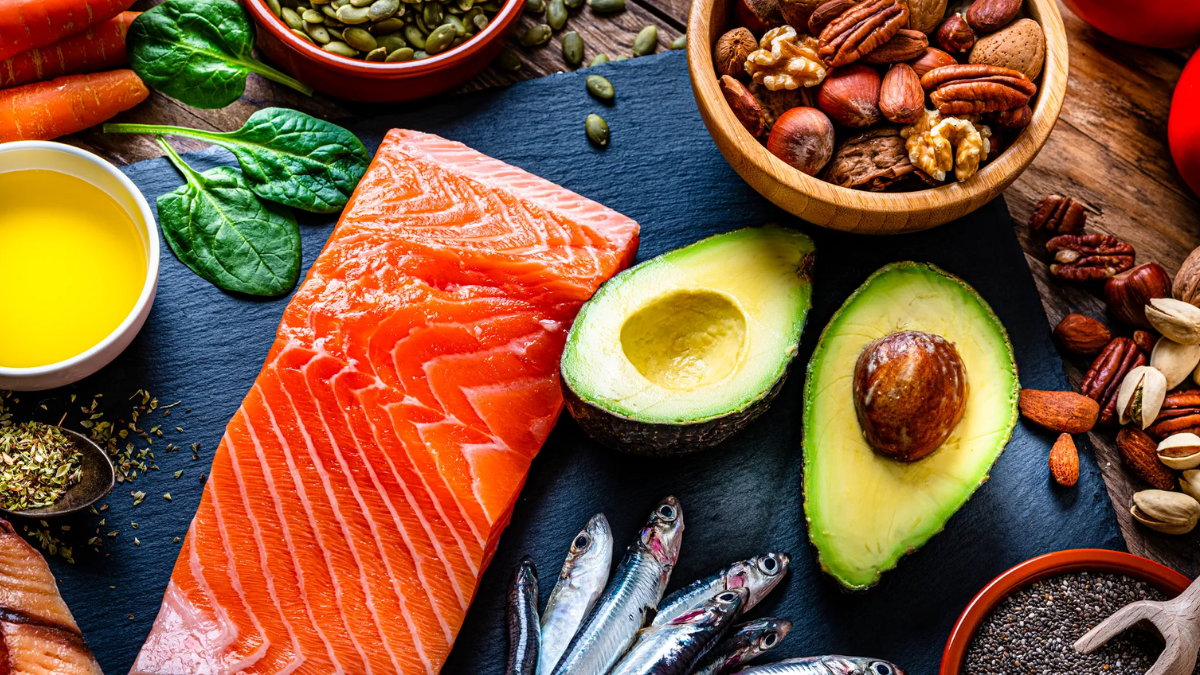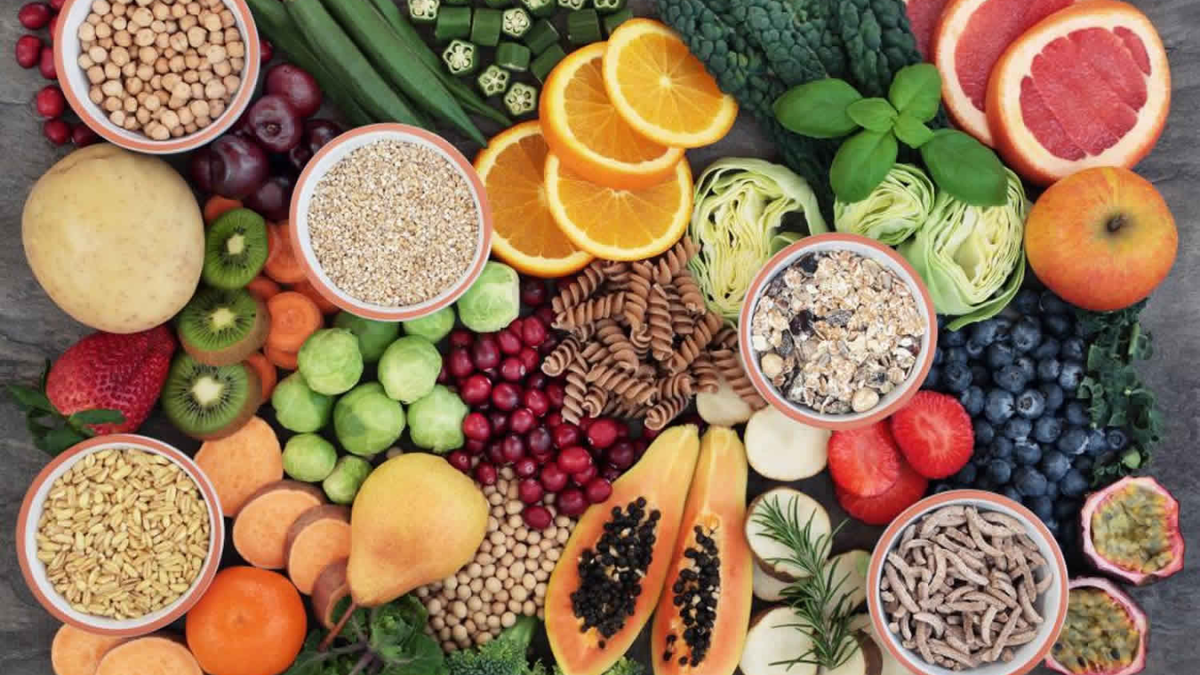You probably don’t get enough potassium in your diet if you’re like the majority of Americans. Potassium is a mineral that can be found in some foods, just like calcium and sodium. It’s essential to consume a lot of potassium-rich foods since eating the correct quantity of potassium in your diet helps to keep you healthy. The symptoms of chronic kidney disease (CKD), a disorder in which the kidneys are damaged and unable to adequately filter blood, may be managed with a low potassium diet.
Potassium is a mineral in many meals and has vital bodily functions, including regulating fluid equilibrium. Although the kidneys typically filter the blood and aid in maintaining constant potassium levels, certain medical conditions impede their capacity to do so. Your doctor or dietitian will advise you on the specific restriction level you need based on your individual health needs.
What are the Best Foods to Eat for Low Potassium?
Changing your diet can help you reduce your potassium intake, but it’s vital to remember that this vitamin is essential for good health. The idea is to select foods that contain the mineral in sufficient amounts without leading to an undesirable accumulation.
According to the National Kidney Foundation, a diet low in potassium should have 2,000 mg of the mineral daily. A doctor might suggest a different target, though.
Fruits
Low potassium fruits include:
- Apples (1 medium) or apple juice or sauce
- Blueberries
- Blackberries
- strawberries
- raspberries
- cherries
- grapes or grape juice
- cranberries or cranberry juice
- pineapple or pineapple juice
- mandarin oranges
- grapefruit (1/2 fruit)
- watermelon (1 cup)
- plum (1 whole)
- tangerine (1 whole)
- peaches (1 small)
Vegetables
Low potassium vegetables include:
- Green beans
- wax beans
- peas
- alfalfa sprouts
- green or red cabbage
- raw white mushrooms
- cucumber
- eggplant
- kale
- lettuce
- onions
- peppers
- parsley
- rhubarb
- radishes
- watercress
- yellow or zucchini squash
- asparagus (6 spears)
- celery (1 stalk)
- corn, fresh (½ ear)
Protein Sources
Beyond vegetable sources, other low potassium sources of protein include:
- Eggs
- Canned tuna
- Beef
- Poultry
- Some cheeses
Carbohydrate Sources
Low potassium foods rich in carbohydrates include:
- White rice
- White bread
- White pasta
- Corn products, such as polenta and cornmeal grits
Drinks and Snacks
Some low potassium options include:
- Rice milk
- Coffee
- Tea
- Herbal tea
- Sparkling water
- Cakes and pies without chocolate or fruits high in potassium
- Cookies without chocolate or nuts
Foods to Limit or Avoid
More than 200 mg of potassium is present in each serving of meals high in potassium.
Anyone wishing to minimize their potassium consumption may want to avoid the items listed below.
The typical serving is 1/2 cup unless otherwise specified. It should be noted that some of these items might become acceptable if the serving size and hence the potassium content are decreased.
Fruits
The following are fruits with more potassium and their average serving sizes:
- Raw apricots (2 medium)
- Dried apricots (5 halves)
- Dates (5 whole)
- Other dried fruits
- Avocados (¼ whole)
- Bananas (½ whole)
- Cantaloupe
- Honeydew melon
- Grapefruit juice
- Kiwi (1 medium)
- Mango (1 medium)
- Nectarine (1 medium)
- Orange (1 medium)
- Orange juice
- Papaya (½ fruit)
- Pomegranate (1 whole)
- Pomegranate juice
- Prunes
- Prune juice
- Raisins
Vegetables
Listed below are some vegetables higher in potassium:
- Acorn squash
- Artichokes
- Bamboo shoots
- Butternut squash
- Boiled beets
- Cooked broccoli
- Brussels sprouts
- Chinese cabbage
- Raw carrots
- Leafy greens, except kale
- Hubbard squash
- Kohlrabi
- Okra
- Parsnips
- Potatoes
- Pumpkin
- Rutabagas
- Cooked spinach
- Tomatoes
- Cooked white mushrooms
Nuts, Seeds, Beans, and Legumes
Find other potassium-rich legumes, beans, and seeds below:
- Baked beans
- Black beans
- Nuts and seeds (1 ounce)
- Peanut butter (2 tablespoons)
- Dried beans and peas
- Lentils
- Legumes
Other Foods to Avoid
- Bran products
- Chocolate (1.5–2.0 ounces)
- Granola
- Milk, all types (1 cup)
- Molasses (1 tablespoon)
- Salt-free broth
- Yogurt
People who want to reduce their potassium intake may also need to avoid salt replacements because they can have higher mineral concentrations, including potassium.
How to Extract Potassium from Food and Vegetables?
A method to get some potassium from food is leaching. Before attempting it at home, a person should speak with a doctor about the best strategy and the appropriate amount to leach.
For example, to remove potassium from various vegetables:
- Peel and rinse the vegetables under warm water.
- Cut the vegetables into pieces that are 1/8 inch thick.
- Soak them in warm water for at least 2 hours. Use ten times as much water as there are vegetables.
- Rinse them under warm water again.
- Boil them using five times as much water as there are vegetables.
This can take too much time for some people. The potassium content of some foods high in potassium, such as cubed potatoes, can be reduced by up to 50% by merely boiling them for 10 minutes, according to an earlier study from 2008.
Drain and rinse fruits and vegetables that have been canned or put in pots to eliminate any extra minerals in the canning liquid.
Why do Potassium Levels Matter?
A vital electrolyte in the body is potassium. In addition to supporting the operation of the kidneys, nerves, heart, and muscles, it generally supports the function of cells.
Sodium and potassium interact as well. Without sufficient potassium, elevated sodium levels can cause an increase in blood pressure.
A person’s heart disease and stroke risk may increase by low potassium and high salt levels. The risk of major heart diseases, such as cardiac arrest, increases if potassium levels are excessively high or too low.
Who Should Track their Potassium Levels?
The kidneys aid in blood filtration and maintain a healthy amount of electrolytes in the blood, such as potassium.
It’s unlikely that the typical healthy individual needs to lower their potassium intake. For instance, people in the United States typically consume too little potassium in their diets. And if a healthy person eats too much, their kidneys usually eliminate the extra through the urine.
Hyperkalemia is the term used by doctors to describe elevated potassium levels. But impaired kidney function brought on by a condition like chronic renal disease can disturb the equilibrium of electrolyte levels. Additionally, several renal disease medications can exacerbate an imbalance.
Other health conditions that can affect potassium levels include:
- Type 1 diabetes
- Adrenal insufficiency
- Congestive heart failure
- Liver disease
Working closely with a medical practitioner will help someone with any health problems above maintain healthy potassium levels.
Dietary Tactics
Medical practitioners may suggest dietary modifications to lower potassium levels. This calls for a person to know the potassium levels of various foods and, whenever possible, select low potassium ones. Additionally, it’s crucial to keep potassium-rich meal portion amounts under control. In the interim, medical professionals might also suggest drugs that facilitate the mineral’s removal from the body.
How can I Keep my Potassium Level from Getting too High?
To maintain low potassium levels in the diet, in addition to choosing foods low in the mineral and avoiding those high in it, consider the following suggestions:
- Most foods have Some Potassium, and Serving Size is Important.
- Too much of a low potassium food can become a high potassium food if consumed in excess.
- High potassium vegetables can be made lower in potassium by leaching, a process by which some potassium is pulled out of the vegetable.
- Change the water every four hours if soaking longer
- Avoid drinking or using the liquid from canned fruits and vegetables, or the juices from cooked meat
- Patients on dialysis must take care to get all treatment or exchanges they are prescribed
Which Health Problems can you Face Due to High Potassium?
The medical word for having potassium levels greater than usual is hyperkalemia. Since most persons with hyperkalemia don’t exhibit any symptoms, a doctor may have trouble diagnosing the condition.
Chronic kidney disease, uncontrolled diabetes, dehydration, an accident that results in significant bleeding, eating too much dietary potassium, and some drugs are the main causes of hyperkalemia. When a person’s potassium levels are greater than 5.0-5.5 milliequivalents per liter, a doctor would often diagnose hyperkalemia.
Depending on the degree, hyperkalemia is treated differently. A person with chronic hyperkalemia typically has impaired kidney function, and medical professionals will recommend treatment to control the condition. To remove the potassium from the body, doctors may employ dialysis and intravenous medicines in acute hyperkalemia, which frequently follows a specific incident, such as trauma.
Here are some health issues you can face due to high potassium levels:
- Chronic kidney disease: A lower kidney capacity means that the kidneys may not be able to filter potassium out of the body adequately.
- Uncontrolled or untreated diabetes: As a decrease in kidney function is a possible complication of diabetes, poorly managing the condition may result in hyperkalemia.
- Taking certain medications: Nonsteroidal anti-inflammatory drugs (NSAIDs), such as ibuprofen and naproxen, potassium-sparing diuretics, cyclosporine, trimethoprim, angiotensin-converting enzyme (ACE) inhibitors, beta-blockers, calcium channel blockers, succinylcholine, digoxin, heparin, and mannitol may also prevent the kidneys from eliminating excess potassium.
- Heart disease: In people with congestive heart failure, lower kidney function combined with the medication to treat the disease can cause hyperkalemia.
- Injury: Burns or other severe injuries can cause damage to tissues that results in the body releasing extra potassium into the blood.
- Hypoaldosteronism: This rare condition results in a lack of aldosterone. This hormone helps regulate the amount of potassium the body excretes in the urine. People may also experience pseudohypoaldosteronism, which mimics the condition.
- Congenital adrenal hyperplasia: A rare disease resulting from a gene mutation that can cause lower aldosterone levels.
- Addison’s disease: This condition occurs following damage to the adrenal glands. It can affect the production of hormones, such as aldosterone and cortisol, which can affect potassium levels.
- Higher potassium intake: Consuming too much potassium through medications or diet can cause hyperkalemia. This is rare but may affect people whose kidneys do not function optimally.
- Pseudohyperkalemia: This occurs when a person receives a falsely high potassium reading. This may happen when using a syringe or other methods that cause hemolysis, which is the breakdown of red blood cells.
- Dehydration: Severe dehydration may lead to the body being unable to process potassium.
Conclusion
A vital mineral that supports numerous crucial processes is potassium. If a person has a condition that affects their kidneys or adrenal glands, they may need to avoid the buildup of this mineral and should carefully check their potassium intake. To monitor and control potassium levels, working closely with them is critical. A physician may advise a low potassium diet.
3500 to 4500 mg of potassium per day, on average, should be found in a healthy American’s diet. A diet low in potassium typically contains 2000 mg per day. Based on your unique health needs, your doctor or dietician will advise you on the precise level of restriction you require. A kidney dietician is qualified to assist you in changing your diet to reduce the risk of kidney disease complications.


